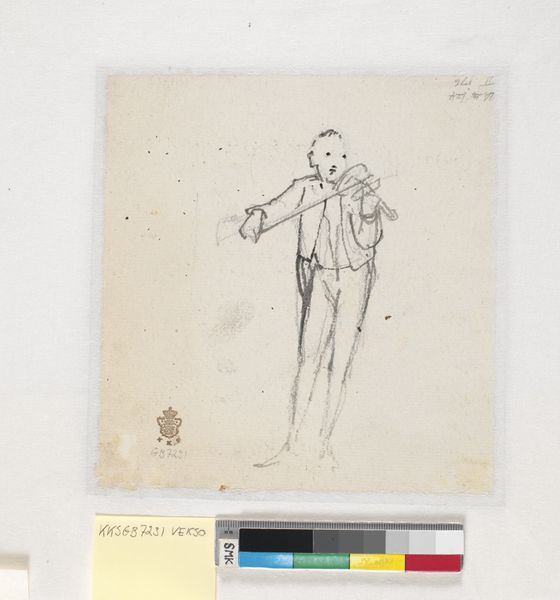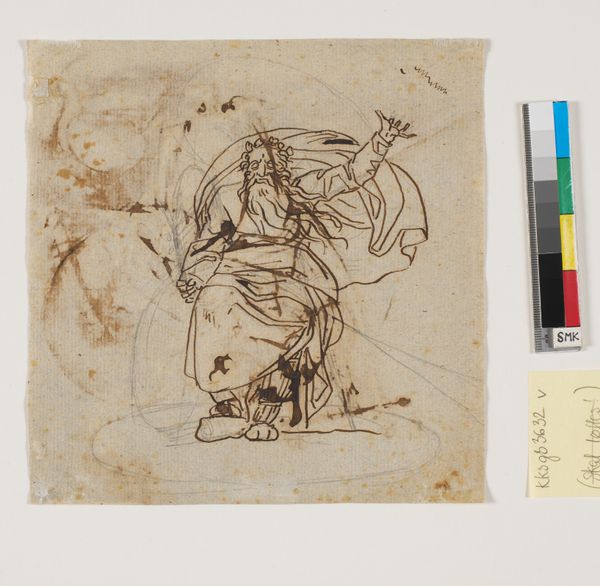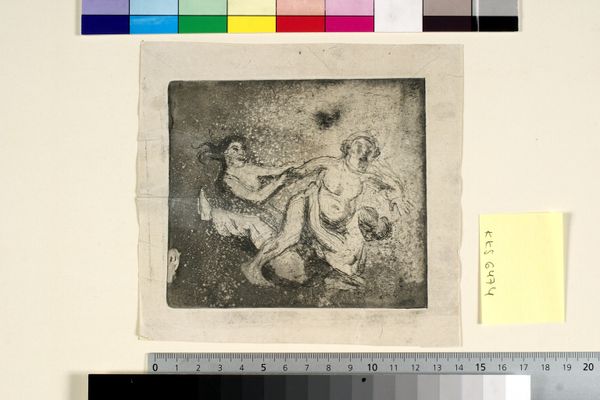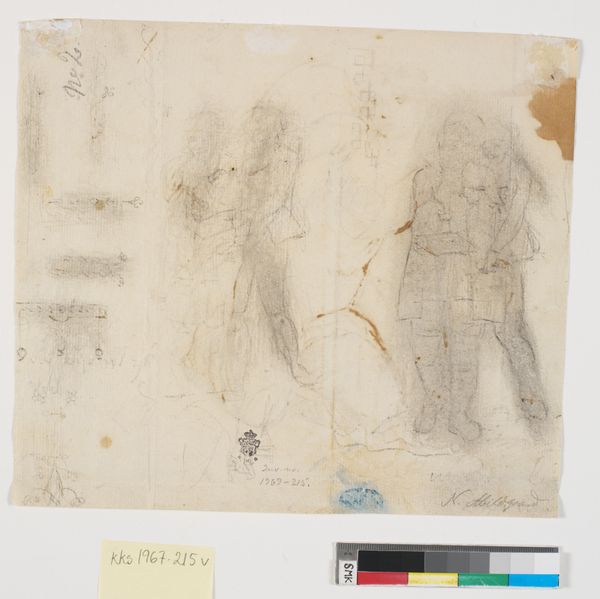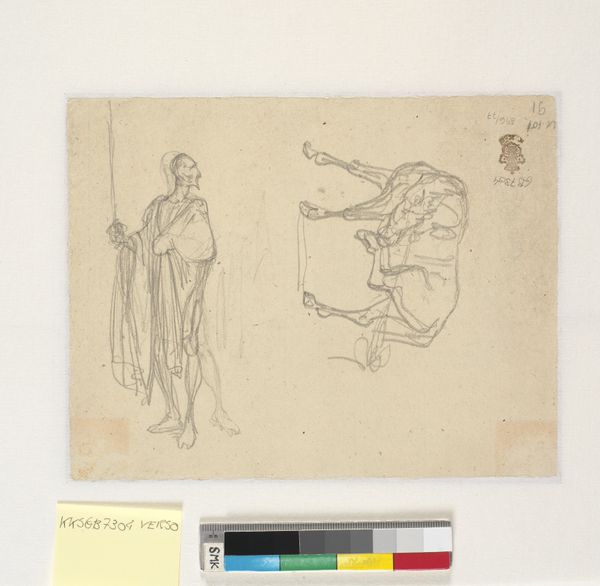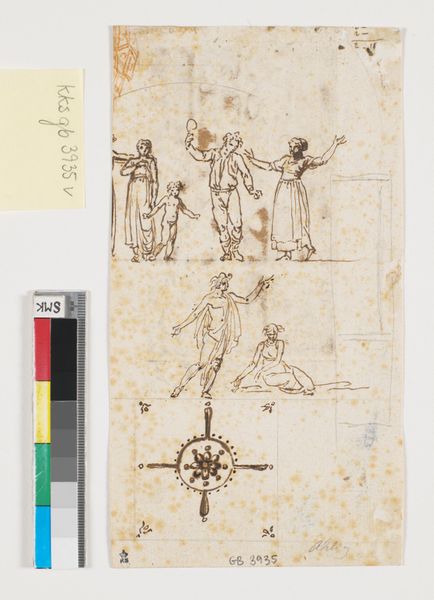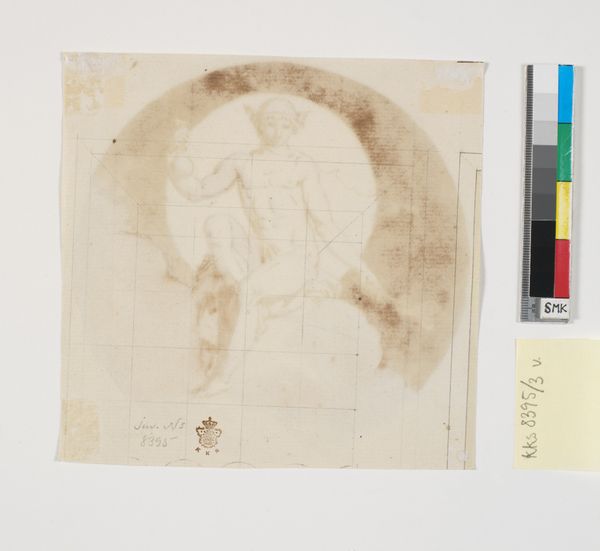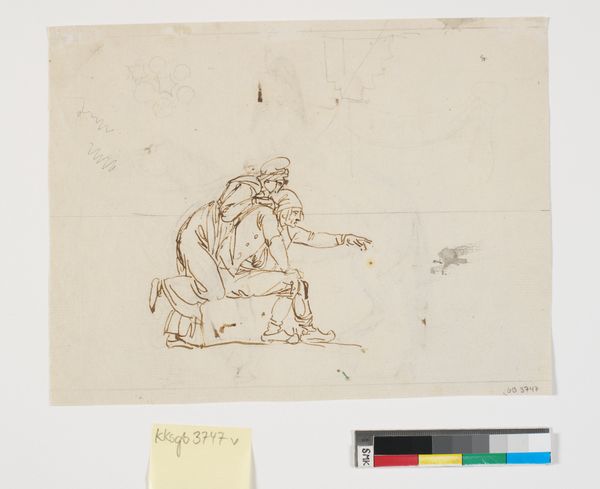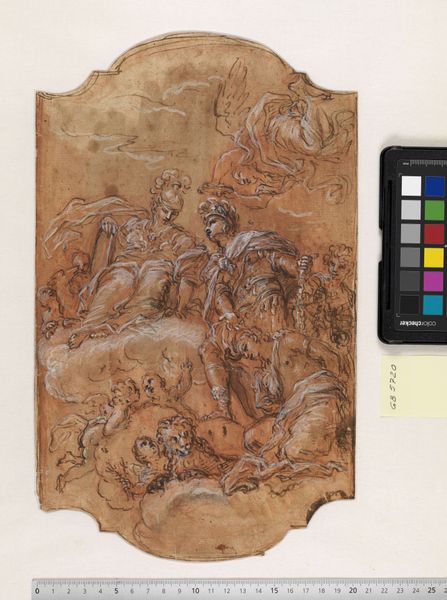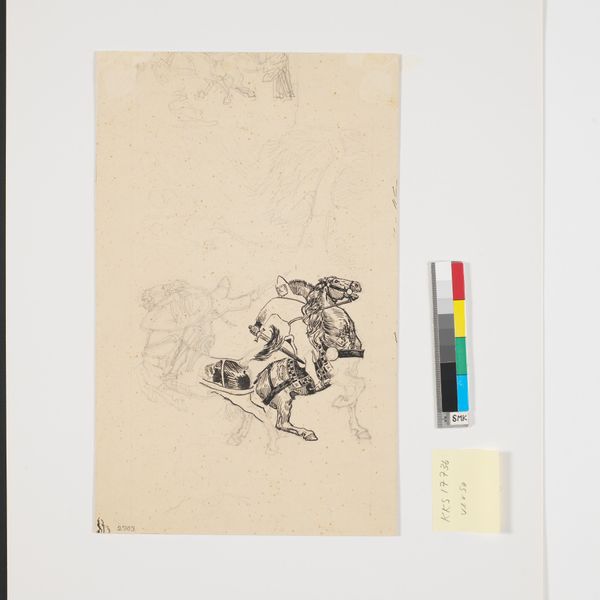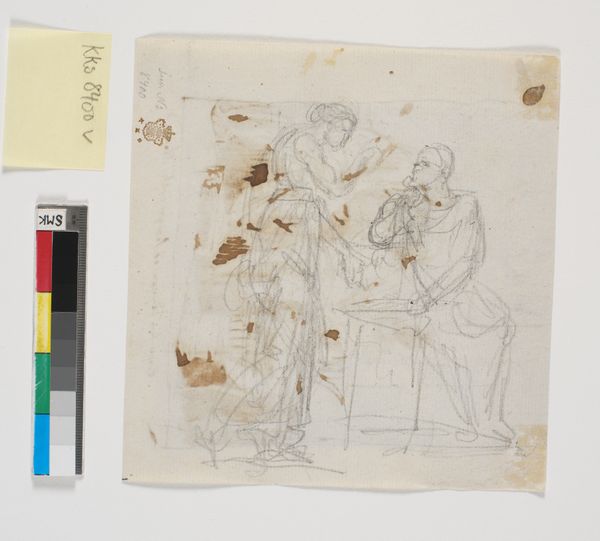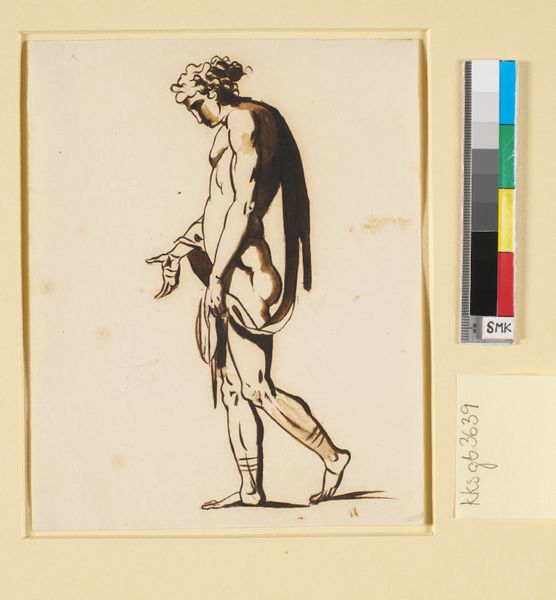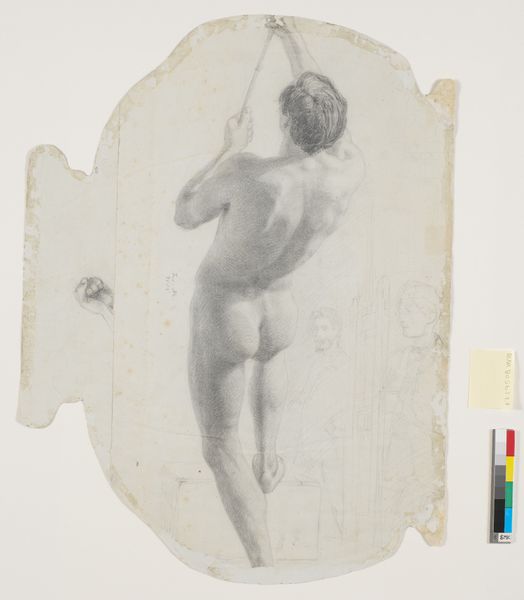
Knælende nøgen mand med begge arme strakt mod højre 1743 - 1809
0:00
0:00
drawing, paper, ink
#
drawing
#
neoclacissism
#
figuration
#
paper
#
ink
#
nude
Dimensions: 115 mm (height) x 116 mm (width) (bladmaal)
Editor: We're looking at "Kneeling Naked Man with Both Arms Stretched to the Right" by Nicolai Abildgaard, created sometime between 1743 and 1809. It's an ink drawing on paper. The figure seems so dynamic, poised between balance and collapse. What do you see in this piece, considering its materiality? Curator: The immediate thing I note is the labor involved. Consider the repetitive, skilled hand movements required to produce such precise lines with ink on paper. The act of drawing itself, especially depicting the human form with such attention to musculature, becomes a study of artistic production as labor. Editor: That's interesting! I hadn't thought about the labor aspect so directly. How does the paper itself factor into your analysis? Curator: The paper, its quality, its potential origin, speaks volumes. Was it handmade, a more laborious process indicative of high art practices? Or machine-made, pointing towards early industrial shifts influencing art production? The paper's materiality also emphasizes the artist’s reliance on and perhaps even his exploitation of certain material resources available at the time. Editor: So, you’re suggesting we look beyond the subject and into the very 'stuff' that constitutes the art. It kind of flips how I usually approach things. Does Neoclassicism, as a movement, change that materiality? Curator: Neoclassicism often looked back to classical ideals of purity and form, but here, the messy materiality of the ink and the apparent labor resist a completely clean, idealized image. We might consider the societal implications of representing the nude form during the period. Was it readily accepted and available? How might the audience react to it? It opens a way to see the work less as about "eternal beauty," and more of as product rooted in particular labor dynamics. Editor: So, the art and its creation becomes linked with broader societal manufacturing or productive forces? Curator: Precisely! By questioning those traditional boundaries between artistic vision and material construction, and labor, it encourages us to interrogate what it *really* means to make art. Editor: That makes me consider art's context differently now. It makes everything seem connected.
Comments
No comments
Be the first to comment and join the conversation on the ultimate creative platform.
